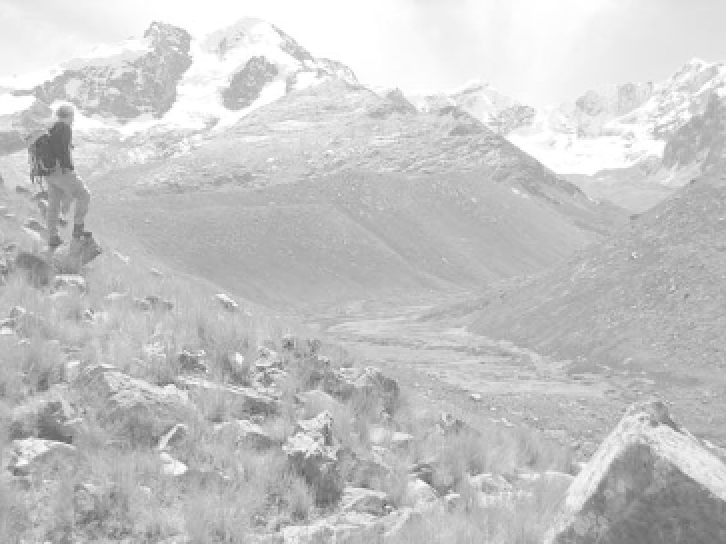Geology Reference
In-Depth Information
completely or largely homogenized by shearing sedi-
ment that is laid down by a glacier sole while sliding
over or deforming its bed (or both).
3
Melt-out till
- sediment released by the melting of
stagnant or slowly moving debris-rich glacier ice,
and directly deposited without later transport or
deformation.
Other ice-marginal landforms, which have no pre-
ferred orientation with respect to ice flow, are hummocky
moraine and various forms resulting from mass move-
ments (rockfalls, slumps, and debris flows). A hummocky
moraine formed near the ice margin is similar to a
hummocky moraine produced elsewhere, but it includes
irregular heaps of debris that fall from an ice mass in the
ice-marginal zone and debris from dead ice that becomes
detached from the main ice mass.
Ice-margin landforms
Landforms produced at the ice margin include differ-
ent types of end moraine, all of which form around a
glacier snout. A lateral moraine lies at the sides of a glacier
(Plate 10.12). A
terminal moraine
is an arcuate end
moraine that forms around the lobe of a glacier at its far-
thest limit (Plate 10.13; Colour Plate 12). A
recessional
moraine
marks a time of temporary halt to glacial retreat
and is not currently touching a glacier. A
push moraine
is formed by sediment being bulldozed by a glacier
snout, especially a cold glacier. Some push moraines show
annual cycles of formation and comprise a set of small,
closely spaced ridges.
GLACIOFLUVIAL LANDFORMS
Huge quantities of sediment are shifted by
meltwa-
ter
. Indeed, more sediment may leave a glacial system
in meltwater than in ice. Sediment-charged meltwa-
ter under a glacier is a potent erosive agent, especially
towards the glacier snout. After leaving a glacier, meltwa-
ter may erode sediments, as well as laying down debris to
create ice-marginal and proglacial depositional landforms
(Table 10.4).
Plate 10.12
A pair of lateral moraines from a valley glacier in the Cordillera Blanca, Peru. Former ice flow is towards
the viewer.
(
Photograph by Neil Glasser
)

